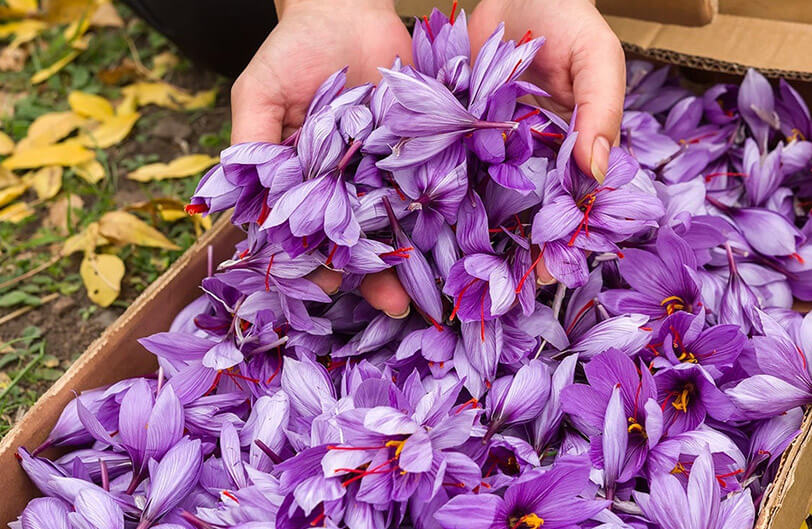The Saffron Flower “Crocus sativus”
Have you ever thought about how saffron spice produces? Today at Zarlux saffron we want to share our information about the saffron flower and the process. If it‘s useful for you, just leave a comment for us!
Saffron is a 10-year-old plant. It’s considered a small plant. Upon flowering, the plants are 20-30 cm(8-12 inches) in height and bear up to flowers. Saffron is derived from the flower of Crocus sativus, commonly known as the “saffron crocus which is also known as “wild saffron”.

The flower grows from inside the saffron bulb with numbers of long green leaves. The stem grows through the leaves and leads to one to five flowers. Saffron flowers have 6 purple petals. The saffron petals can be pink or purple or white in some varieties. The flowers have 3 yellow saffron flags and a pistil leading to a red three-branched stigma. The part that we use in this plant is the saffron style (a white root that leads to 3 red-colored stigmas) and the stigma of three red branches, which is known as saffron and has a fragrant smell with a slightly bitter taste.
So, saffron root means the end of the saffron stigma that comes out of the saffron flower stalk. Saffron root has the aroma and saffron stigma the color.
The three stigmas are handpicked from each flower, spread on trays, and dried over charcoal fires for use as a food flavoring and coloring. A pound (0.45 kilogram) of saffron represents 75,000 blossoms. Saffron contains 0.5 to 1 percent essential oil, the principal component of which is picrocrocin. The coloring matter is crocin.
Believed native to the Mediterranean area, Asia Minor, and Iran, the saffron crocus has long been cultivated in Iran and Kashmir and is supposed to have been introduced into Cathay by the Mongol invasion. During various periods, saffron has been worth much more than its weight in gold; it is still the most expensive spice in the world.


